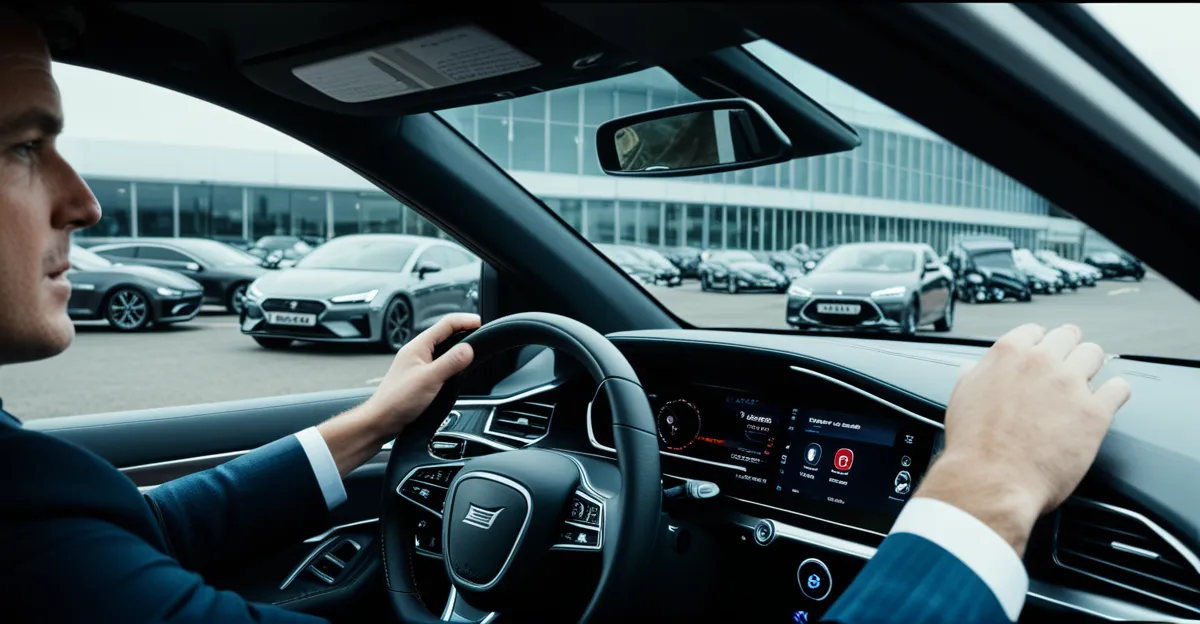The impact of smart technology on automotive safety in the UK
Smart automotive safety technology is transforming vehicle safety standards across the UK. Technologies such as automatic emergency braking, lane departure warnings, and adaptive cruise control are increasingly integrated into new vehicles. These systems aid drivers by detecting hazards sooner and reacting more swiftly than human reflexes allow, enhancing overall road safety.
Statistics reveal a tangible technology impact: accident rates have decreased in regions with higher adoption of smart safety features. For example, insurance data shows a notable reduction in collision claims among vehicles equipped with advanced sensor systems. This trend underscores how smart automotive safety contributes significantly to accident prevention.
In the same genre : What Future Trends Will Revolutionize the UK Automotive Industry?
The UK government plays a critical role in accelerating this progress through policies that encourage innovation. Collaborative efforts between regulators, automotive manufacturers, and tech companies have created frameworks to support the deployment of smart safety technologies. Grants and incentives help speed up the integration of these systems, aligning with the UK’s goal to reduce road traffic injuries and fatalities.
By combining regulatory support with technological advances, the UK is poised to maintain and enhance its vehicle safety standards, ensuring safer journeys for all road users.
Have you seen this : What Innovations Can We Expect from the UK Automotive Industry?
Emerging smart technologies shaping UK automotive safety
Smart automotive safety in the UK is rapidly advancing through the adoption of Advanced Driver Assistance Systems (ADAS). ADAS technologies like automatic emergency braking, adaptive cruise control, and lane-keeping assist are increasingly standard in newer vehicles. These systems improve reaction times and reduce human error, directly lowering collision risks.
Artificial intelligence (AI) plays an expanding role in UK vehicle safety, enhancing data processing capabilities inside vehicles. AI algorithms analyze inputs from vehicle sensors to predict hazards, optimize braking, and adjust driving behavior dynamically. This real-time responsiveness significantly strengthens accident prevention, a critical aspect of the technology impact seen in recent UK traffic safety improvements.
Connected cars in the UK utilize vehicle-to-vehicle (V2V) and vehicle-to-infrastructure (V2I) communication to share information on road conditions, congestion, and potential dangers. This connectivity allows for collective safety enhancements and smoother traffic flow.
Advanced vehicle sensors, such as radar, LiDAR, and ultrasonic devices, underpin these technologies by providing precise environment mapping. They enable features like pedestrian detection and blind-spot monitoring, which are vital for reducing accidents.
Together, ADAS, AI, and connected car technologies represent a transformative shift, contributing to safer UK roads through continuous innovation and integration.
UK-specific regulations and safety initiatives
The UK has established comprehensive smart automotive safety regulations that drive the adoption of cutting-edge safety technologies. These government initiatives ensure that new vehicles comply with stringent standards, encouraging the integration of Advanced Driver Assistance Systems and other smart features.
Key regulations include mandatory installation of certain safety technologies like automatic emergency braking in new vehicles, reflecting the government’s commitment to reducing traffic fatalities. This legal framework provides clear guidelines for manufacturers, fostering innovation while prioritizing road user safety.
To accelerate development, the UK government allocates substantial funding to research and development projects aimed at enhancing UK vehicle safety. Collaborative partnerships between automakers, technology firms, and regulatory bodies have been instrumental in piloting smart technology deployments. These partnerships align regulatory compliance with commercial feasibility, speeding innovation cycles.
Moreover, public sector support extends to enabling infrastructure upgrades such as smart traffic signals and improved communication networks that complement vehicle technologies. This holistic approach strengthens the technology impact by creating an ecosystem where smart automotive safety can thrive across the UK’s road network.
Through robust regulations, targeted funding, and dynamic collaboration, the UK is effectively shaping a safer driving environment driven by smart safety technology adoption.
Real-world applications and case studies from the UK
UK automotive case studies highlight significant advancements stemming from smart safety technology adoption. Leading manufacturers in the UK integrate ADAS and AI-driven systems to deliver measurable improvements in road safety. For instance, trials involving vehicles equipped with automatic emergency braking and lane-keeping assist have reported notable reductions in collision rates, particularly in urban environments.
A compelling urban transportation case study demonstrated how smart automotive safety features contributed to a 20% decline in pedestrian accidents over two years. This success is mainly linked to enhanced sensor arrays, which include LiDAR and radar, allowing vehicles to detect and respond to vulnerable road users quickly.
Further insights from UK road safety authorities reveal positive correlations between these technologies and accident prevention outcomes. Expert commentary consistently endorses ongoing investments in connected car platforms, emphasizing their role in traffic hazard prediction and avoidance.
These real-world applications exemplify the practical benefits of smart technology in enhancing UK vehicle safety, serving as proof points that encourage wider adoption. This momentum is vital for sustaining and accelerating safety improvements across the nation’s roads.







